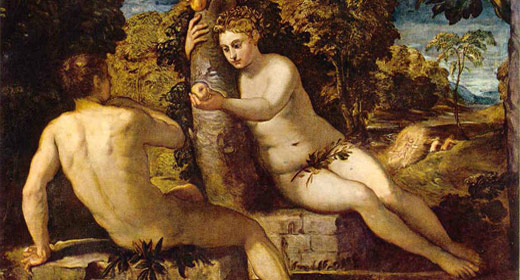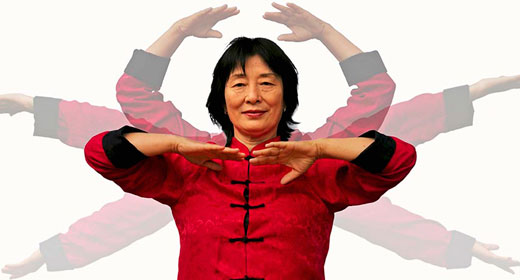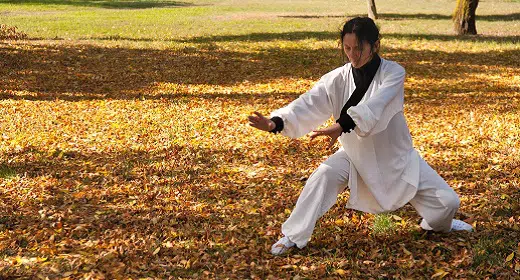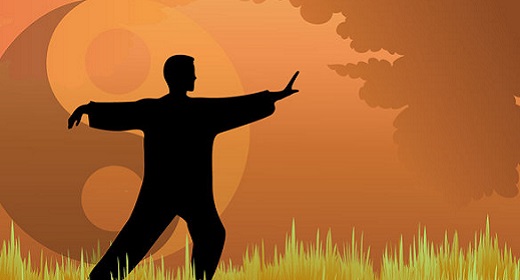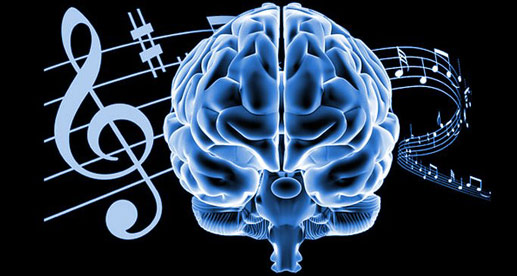by Juan Li: The beginnings of dream practices in China are lost in the depths of antiquity…
It is said that the emperors of the Shang Dynasty some 3500 years ago had attached to their court a category of ritual performers called Zhan Meng in charge of interpreting dreams and facilitating dream divination.
These dream specialists worked together with the shamans and other ritual specialists interpreting omens which appeared either in the clouds, natural events or in dreams so as to chart the best human course of action for the emperor and other government officials. The interest in the experiences which took place in dream state were not only confined to the government. There was a group of individuals who in the inaccessible recesses of the sacred mountains, far removed from ordinary human interaction, explored the infinite potential of dream state.
These practitioners were those who followed the way of nature back to its origins living a simple life in accordance with the rhythms of nature. They were called Taoists, from the word Tao meaning path or natural way of living. Like the ancestry of the dream practices, there have been Taoists in China for over 4000 years of recorded history. Very little is known about these Taoists, even in China, because they carried out their practices in utmost secrecy.
Not because their practices were dangerous and had to be hidden, but simply because one very important aspect of their self cultivation was withdrawal from ordinary society so as a to cultivate a point of view radically different from most people.
Over the centuries the Taoists developed a highly efficient and coherent system of practices aimed at realizing the full potential of human beings. The Taoists were not content with having good health, and living a quiet life. Their practices were aimed at developing not only the physical aspect of their being but most specially the subtle and invisible aspects called the energy body.
The Way of Energy
A fundamental aspect of Taoist practices is the concept of energy or life force.
Energy was understood as a vital force which is at the foundation of all phenomena, both physical and subtle. This energy which they chose to call Qi (Chi) manifests in a wide spectrum of variable intensities or frequencies. From the most subtle which is invisible to the eyes and can only be perceived with the most refined sensitivities in states of mental calm and heightened awareness, to increasingly denser aspects which we begin to perceive as emotional states to the densest aspects as solid matter.
A modern analogy would be from radiation which we are unable to sense consciously, through electricity which gives a good shock to a stone which is easily felt as very hard. The ancient Taoists would sense all these states not as separate but rather as a spectrum of variable intensities. Constantly aware of this energy which animates everything the Taoists went on to explore the non-physical aspects of the life force in their own bodies. The physical body we all can touch and feel is only the densest aspect of the life force, the grossest aspect of the energy spectrum.
There are increasingly subtle aspects of the spectrum where the life force never reaches densification. Every time a Taoist sits down to calm the mind and meditate something very peculiar takes place. The focus of the five senses and the mental attention begins to shift gradually from the dense physical to the more subtle aspects of the body. The longer the practitioner is able to remain calm without distracting thoughts arising or getting drowsy the more refined the sensitivity to the life force becomes. Some ancient Taoists by remaining focused on the subtle energy for hours day after day were able to sense the life force circulating through their bodies.
After years of practice they were able to chart the flows of the life force in their subtle bodies with precision through what is called the energy meridians. The discovery of the energy meridians brought a level of refinement to the Taoists practices where soon it began to have a profound effect on healing the body. Illness was understood as arising when the circulation of the energy was blocked from reaching organs and glands. It was observed that from the blockages at the subtle level of circulation, in time a physical malady would appear precisely in those areas affected by poor circulation.
In order to keep energy circulation at an optimum level the Taoists created a large variety of exercises, dietary practices and meditations. However good circulation is not enough to maintain good health. The Taoists noticed that our emotional states have a profound effect on the quality of the life force circulating through the meridians.
If a person is very angry there is an increase in the heart beat and the circulation of the blood. The rate of breathing changes, often accelerating. Body temperature and muscle tone also increases accordingly. The body is literally boiling over with energy. However the quality of the energy boiling over is very poor due to the negative effect of anger.
It was noticed in antiquity that if a person goes to sleep with a tremendous amount of unresolved anger, first of all falling sleep becomes extremely difficult. There is mental agitation and the person is talking internally for hours. Then when eventually fatigue overcomes the body and the person falls asleep, there is invariably a succession of dreams where anger predominates.
In their refined exploring of the subtle energies the Taoists were able to feel where the emotions, both positive and negative, arise in the body. In the case of anger it was noticed that profound changes took place in the liver. This organ not only became more hot, but it could also become constricted and blocked so much that the circulation of the life force required so much effort that pain was felt on the side of the liver.
With the discovery of the profound effect that emotions have upon the quality and circulation of the life force the Taoists created an entire branch of practices to refine the emotions. One of the simplest practices discovered was that of the Inner Smile, whereby the practitioner sends a smile of appreciation to any part of the body along with a continuous wave of positive feelings.
Another very powerful practice which developed was that of the Six Healing Sounds, where certain sounds are made which induce the vital organs to vibrate more harmoniously thus releasing tensions and blocked emotions in the organs.
The Emotions And Dreaming
One of the great insights of ancient practitioners was the fact that, if a daily regimen of energy practices is maintained – specially refining the emotions – the quality and quantity of dreams changes. If a person goes to bed after having cleared the vital organs from unresolved emotions the amount of emotional dreams and nightmares dramatically decreases, sometimes to the point that they disappear completely.
This does not mean that the person ceases to have dreams, but rather that the quality of the dream shifts from restless to harmonious and pleasant. One of the greatest insights gained exploring the connection between dreams and energy practices was that dreams are experiences taking place at the level of the subtle bodies.
In other words, as a person begins to fall asleep and the senses gradually disconnect from the physical world, they turn inward. A process akin to having a good meditation. As the senses turn inward, the consciousness which was focused on the physical world through the senses also turns inward – in the direction of the subtle energy body.
The Taoists consider falling asleep as a process no different from entering into a meditative state. Just as in deep states of meditation if the body is fatigued the practitioner may fall asleep and go unconscious, so going to sleep has to take place, paradoxically, when one is not fatigued. For the Taoists falling asleep is an open door for playing fully conscious with the subtle energy body and carrying out energy practices without the limitations of the physical body.
Every time we let go into sleep our consciousness shifts its focus from the physical dense body to the subtle energy body at the other end of the spectrum. If we speak of sleep then it is of the physical body, since the subtle aspects never falls asleep. The subtle energy aspect operates 24 hours through our lives. We may not be consciously aware when we shift our conscious focus to the subtle body, however we all do that many times during our waking hours. For example we all had the experience when we were children in school of sitting bored through an uninteresting class. Then as the teacher continued talking we gradually began to go with our minds somewhere else. We began to dream with the eyes open about doing something far more enjoyable at that moment. Our conscious focus was far away from the classroom and the teacher. If this day dreaming went on for a long time, and all of a sudden the teacher asked us a question, we had to forcefully bring back our mental focus to the teacher, with predictable inability to answer the question properly. Ordinarily we say we were fantasizing at that moment, doing something which was not real in a physical sense.
The Taoist would not call it fantasizing but rather shifting attention from the physical to the subtle, just as when we are dreaming in bed. Dreaming is not an action which is confined to falling asleep. We dream 24 hours a day. A part of our consciousness which is not fully engaged in the physical plane dealing with day to day problems is focused on the subtle aspects of the body. Many times a day we shift conscious focus from physical reality to subtle reality. Our awareness at that moment may be focused on a friend that is at the other side of the planet. Sometimes if our focusing is intense enough something unexpected may happen: the phone rings! It is our friend calling from the other side of the planet to tell us they were thinking of us just at that moment.
Has this happened to you? Ordinarily we call these happenings `coincidence’. A word for labeling the unexplainable. For the Taoists familiar with the full spectrum of the life force this is not something unexplainable. When we shift our mental focus onto someone far away at that instant we are in direct contact with the subtle body of that person. The geographical distance is irrelevant. One of the insights which opens as one begins to consciously shift mental focus from the physical to the subtle is that the life force is not limited by physical reality. It could not be because the physical is just one aspect of the energy spectrum. There is the rest of the spectrum operating simultaneously beyond the physical. So energy is not limited by space, nor time which is also a function of space.
Every time we place the head on the pillow and fall asleep our consciousness focuses its gaze upon a dimension which is not limited by time or space. A dimension which is extremely fluid and efficient because it is not limited by time or the constraints of distance. In dream we have all experienced how in the fraction of an instant we can change from walking to flying across the landscape or being here and then on the other side of the moon.
The practices developed by the ancient Taoists around dream state were designed to tap into the inexhaustible reservoir of possibilities that transcending time and space offers. One essential notion they got rid of was the ordinary belief that dreams are fantasies with no basis on reality.
A dream may not have any basis on physical reality, but then physical existence is not the only realm of experience there is. What we ordinarily call reality is limited to physical experience and is just a fragment of the totality of being. Dreams, intuitions, feelings we dismiss into the dust bin of the not-real. The Taoists would call that a fragmented vision.
The Practice of Dynamic Sleep
A fundamental goal of Taoist dream practices is the ability to enter dream state deliberately, as an act of will, fully conscious. Ordinarily as we begin to fall asleep and relax our senses disconnect one by one we become progressively unconscious, entering a twilight zone which rapidly eclipses into total darkness. From that moment on until we finally awaken several hours later we lose awareness of where we are or that we are asleep.
In Taoist dream practice one of the first things the practitioner does is make a firm decision to remain conscious as one enters dream state. This initial step is done by voicing a mental command of what one intends to practice or experience during that sleep session. The sleep command is a powerful expression of willpower which is usually voiced over and over as the practitioner prepares to sleep. This repetition of the sleep command, like all energy practices is to be done with complete awareness and mindfulness, rather than mechanically or unconscious. As one begins to enter the twilight state of drowsiness the sleep command begins to function like a beacon guiding the consciousness across the threshold of the unconscious.
Opening Circulation
The sleep command however is not the initial step in dream practice. Dream practices are not isolated from other modalities of Taoist exercises. Usually a novice in the Taoist system will begin by learning to open communication with the life force through a series of exercises designed to open the flow of the energy meridians. Only when the meridian system is circulating properly and a degree of physical and emotional balance has been attained does one begins dream exercises.
It has been discovered since ancient times that if the circulation of the life force is not balanced, the resulting imbalance manifests very clearly in the quality of one’s dreams. Generally as the meridians are opened and one learns to regulate the emotions through specific energy practices, there is a reduction of ordinary dreams. One begins to have less and less of turbulent emotional dreams which originate from congested organs and in its place the luminous dreams of profound experiences begin to manifest from time to time. A practitioner, who for example has been keeping dream journals for several years, after a months of intense meridian exercises and meditations usually report very infrequent dreams that are very widely spaced apart. After some time they also begin to experience greater clarity in dream state. Dreams are more vivid, the images more powerful carrying a sense of transcendence. In Taoist practice it is said that as we improve energy circulation and begin to harmonize the emotions in the organs there is a change in the quality of one’s energy from a gross state to a refined one. This is reflected as better health both physically and mentally. As the quality changes one can also say that the potential of the individual changes. The nervous system, the brain, the glands, the vital organs are all able to function at a greater degree of harmony. Instead of investing a great part of their vitality fighting illness and trying to maintain balance in the midst of fatigue and emotional upheavals, the organism is operating in an energy surplus mode.
The state of energy abundance is fundamental for the unfolding of dream practices. A Taoist invests years of constant effort bringing about such state. If dream practices are attempted otherwise when the body is tired and fighting imbalances, then one discovers that nothing happens, because the body needs the sleep for the basic function of resting the nervous system and the brain and repairing damaged tissues.
The Foundation of Calming The Mind
Preliminary to dream practices are also the states of mental calmness brought about by long meditations. When the senses turn inward in deep practice, the brain changes waves from active Beta to Alpha, deep Alpha and in experienced meditators to Theta and even Delta. This sequence of changes is very similar to that taking place as we fall asleep. The brain moves from polarization in Beta to greater integration in Alpha, Theta and Delta. This means that a regular meditator has learned to `fall asleep’ consciously seated quietly in a cushion. We need to sleep in order to integrate the hemispheres of the brain and allow the nervous system to rest and repair itself. This essential step is accomplished in the hours of the night when we cease activities and turn the senses inward like a meditator. So if a person is meditating daily and able to integrate the hemispheres of the brain to some degree there is a resulting change in sleep patterns. Most experienced meditators need less sleep than people who do not practice. As their practice progresses is not unusual to begin sleeping an hour less after a few months. Some advanced practitioners get by with only three to four hours and in the Tao system there have been many great sages who eventually transcended the need to sleep at all. A sign of such people would be the absence of a bed in their house!
The Sharping of Mental Focus
If a practitioner has reached the level where the sleep pattern is changing through practices of concentration and circulation of energy then there is also an increase in the ability to focus the intention for long periods of time. In meditation when the senses are turned inward the attention is focused on something such as the breath, an energy center or the circulation of life force in a meridian. As the years go by the practitioner automatically develops greater capacity to remain focused without distractions when the attention is placed on something. This is an increase in mental power and also an intensification of the will or intention. In dream practice the intention which has been strengthened in sitting practice is then developed further in dream state. The Taoist aims at entering the normally unconscious states of sleep fully conscious, carrying forth the awareness and the intention like a candle in the wind. The sleep command being voiced as one falls asleep is the first stage in training the intention to remain sharply focused through the ocean of the unconscious. This simple gesture opens the possibility of extending consciousness into areas where normally we go blank.
The Taoists view dream practice as an opportunity to train the intention and the will in conjunction with the subtle aspects of the body. In other words consciousness which is used to being active only when awake in the physical learns to be awake in the subtle also. This is the subtle dimension which is operating 24 hours of the day.
The Breath And Calmness
Ancient Taoists discovered that as the mind becomes calm during meditation a similar process of calmness takes place in the way we breathe. The breath and consciousness are intimately connected and the change in brain waves that accompany a good meditation are in fact facilitated by a corresponding change in the gross breath passing through the nostrils. Agitated states of mind are generated when the left hemisphere of the brain is most active. This is when we generate Beta waves. At the same time that the left hemisphere activates there is a predominance of breathing through the right nostril. Our breathing alternates from nostril to nostril throughout the day. Generally we breathe through the right nostril from 45 to 90 minutes and activate the left hemisphere of the brain becoming more active. Then for a brief period of 3 to 5 minutes we breathe through both nostrils as the left nostril eventually takes over activating the right hemisphere of the brain. When the right hemisphere of the brain is active we enter into a more relaxed mental state with less activity and less agitation. In meditation in order to enter into a state of calmness a change in the breathing pattern has to take place. If the practitioner is activating the left hemisphere through the right nostril breath then the first change will be to switch it to the left nostril, inducing calmer states to manifest. Eventually as the practice deepens and the brain becomes more integrated the breath takes place through both nostrils at the same time. This is the state where Alpha, Theta and Delta waves begin to manifest.
The Sleeping Tiger
In dream practice the practitioner aims at entering calm states of mind as quickly as possible. Taoists have traditionally brought about such changes by adopting the position known as `The Sleeping Tiger’. In the Sleeping Tiger position one lays on the right side of the body. The right hand may be cupped around the right ear or under the pillow. The left arm is extended resting on the left side. The right leg is slightly bent at the knees, supporting the body, and the left leg is extended without making it totally straight. The purpose of this posture is to press on the right side of the ribs upon certain acupuncture points which induce a rapid change of the breath from the right nostril to the left. In this posture the road is open to enter the calmer states of mind and eventually induce simultaneous nostril breathing. The posture of the Sleeping Tiger was not confined to practitioners in China only. The same posture is adopted by dream practitioners in Tibet and India. The same posture has been found in a sculpture of the sleeping priestess or goddess in the Hypogeum in the island of Malta dating from 3800-3600 BC. The Hypogeum is believed to have been used for receiving prophetic healing dreams by practitioners who spend the night within its precincts.
The Sleeping Tiger posture is not only used for entering dream practice it is also the ideal posture for entering death. In Asian art the Buddha at the moment of death is always shown lying on the right side with the right hand cupped around the right ear. The Practice of Deliberateness A novice after adopting the Sleeping Tiger posture and voicing the dream command will then have a long and rocky road still ahead. at the beginning usually nothing happens. One goes unconscious as usual or if too anxious to accomplish the goal of the practice have difficulty falling asleep. Worse yet some practitioners keep waking up over and over without having a restful night of sleep. What is lacking is a key ingredient of the practice which is going to sleep with deliberateness.
Normally we go to sleep without clarity of purpose, we simply cannot go on from fatigue and exhaustion so we lay down and close the eyes. Whatever happens next is beyond our conscious control. In dream practice the scenario is totally different. The practitioner has a clear goal and is carefully creating the right conditions to fulfill it. But not everything is tight control, there is also the conscious ability to let go into the unknown with the same deliberateness of a swimmer who jumps from a diving board. One lets go into the unknown voicing the command ready to accept whatever happens.
The Stages of Dream Pracice
If the desire to succeed in the practice is excessively strong then, the ancient Taoists warn, one is headed for trouble. First because frustration and impatience is going to develop as we fail to reach our goal. Second because excessive force is a quality which has to be balance with yielding in order to develop the energy practices to their highest potential. It is suggested in dream practice that we begin with the simple command to have a restful sleep regardless of how many hours we sleep. From that one follows with the command to remember dreams or simply to awaken at a certain time without alarm clocks. From those simple commands then one can eventually build up to the monumental task of becoming conscious within the dream that one is asleep.
The ability to become conscious that one is asleep in the middle of a dream requires that the awareness focuses with such intensity that it is not only possible to maintain the thread of the dream but also at the same time step back to realize that one is dreaming. This is made possibly because there is a surplus of energy and sleep is not being used primarily to rest and repair the body. The body has to be rested and balanced for dream practice to unfold. If one is fatigued or carrying a heavy burden of unfinished emotional situations then progress will be very very slow. The body will be mainly occupied with maintenance without a surplus to `play in the clouds’ as the Taoists would say.
Power Naps of The Sleeping Tiger
It is generally assumed that dream practice is best done at night time when the day is done. Taoists dream practitioners are not content to have only one opportunity per day at entering dream state consciously so the practice of power naps was developed early on. Power naps consist in taking short naps several times a day, lasting anywhere from 15 minutes to an hour. The frequency of power naps allows the practitioner to develop the necessary skills at entering dream practice very rapidly.
A by product of power naps is that the body is truly rested so sleep is truly deliberate and not out of fatigue. One of the greatest Taoist dream practitioner of the past was Master Chen Tuan of Henan province in China. He lived during the 10th century and practiced power naps in a cave at the sacred mountain of Hua Shan in west China. It is said that visitors had often to wait while the master completed power naps. Chen Tuan is said to have realized the highest levels of Taoist practices in dream state, spending months at a time in deep conscious sleep. Beyond the constraints of time and space in a dimension that it extremely fluid.
The Realm of Fluidity
The physical dimension is the portion of the energy spectrum most affected by time and space. It is a dimension where there is a tremendous gap between wish and fulfillment of the wish, or between imagination and realization. It is a dimension where anything we do is limited by time and at the same time takes time to accomplish. One of the direct experiences which arises out of consistent dream practice is that time and space have no influence whatsoever in the subtle energy dimensions.
Time and space are not a limiting factor and play no role whatsoever in phenomena. It is extremely hard for physical beings to imagine the state beyond time and space, specially if we have no direct experiences of subtle energy in our bodies or consciousness. We all have experienced in our sleep the extremely fluid nature of dreams. We are able to fly, move great distances, transform ourselves into something else, become objects or simply turn into pure consciousness without a body.
These are all random experiences of transcending physical corporeality. As mentioned before dream practices are not truly aimed at working with ordinary dreams arising from unresolved emotional states or poor energy circulation. And Taoist dream practices have nothing to do with dream interpretation. The ability to remain conscious in dream state is for learning to play in the dimensions without time and space. Dimension where imagination and reality are one and there are no limits.
Master Chen Tuan during his long naps learned to transcends the mental limitations of time and space. One very common problem practitioners have to overcome is the unconscious projection of physicality into the non-physical dimensions. When describing dreams or talking to ourselves in dreams we are limited by the language of time and space. We speak of `going somewhere’, `hurrying up’ and `coming back tomorrow’ and so on. One of the habits the dream practitioner learns is to be present all the times speaking the language of the instant that has no past or future, just eternal now.
In conscious dream state anything that is imagined is experienced simultaneously as dream reality. If one thinks of a house, there is a house instantly. This is totally different from the dense physical dimension where the thought of a house, and the mental image of a house does not manifest a physical house right away. As we all know the thought of a house might take years of effort to manifest. This is why Taoist say that the physical dimension is very dense and very inefficient when it comes to manifesting reality.
There is a tremendous gap between imagination and manifestation. In the fluid state of conscious dreaming it is possible to have direct experiences in an instant. Experiences which are as real and powerful as physical reality. If in a dream we have a very strong experience of loving someone, as we awaken into the physical dimension we still carry the emotional impressions of that love experience throughout the day. If dream state was pure fantasy there would be no powerful impressions to carry during the day and no emotional residue to recall.
Sustaining Focus
The ability to remain focused in conscious dreaming is made possible by the cultivation of mental power and increased vitality. Beginners who are able to awaken within the dream do so for very brief instants before either awakening fully into the physical or going unconscious into deeper sleep. Sustaining focus is very much like learning to ride a bicycle. One has to maintain a crucial balance for indefinite time, which in this case is not awakening into the physical or going unconscious, and at the same time carry out the numerous exercises for developing the use of the will and the intention.
As we grew up we learned to focus our attention in the physical world through all of the physical tasks such as learning to walk, talk and memorize in school. As babies our attention span for concentrating on anything was very limited and could not be sustained for more than a few seconds. As we entered school we learned more and more to use our mental focus for longer and longer uninterrupted periods. Usually the best students are those who from very early learned to focus their attention with intensity for long periods of time. A great teacher would be one who is able to keep the attention of the students fully engaged for long periods of time also. So in the physical dimension we become skillful at sustaining focus of the consciousness for long periods of time.
In dream practice the ability to sustain focus is a skill that develops gradually with much difficulty and many set backs. This is so because sustaining focus in the physical dimension requires only a fraction of the energy it takes for doing so in the fluid dimensions beyond time and space. A good analogy would be the difference between trying to run underwater and on the ground.
Surplus Energy
The fuel for dream practice is surplus energy-not only abundance of vitality but specifically a surplus of vitality to be invested in learning to sustain conscious focus in dream state. The preliminary energy practices mentioned before lay the foundation for starting dream work but they are not enough. At some point the practitioner has to dig deeper into the available resources and learn to utilize them more and more efficiently. The obstacles and lack of progress encountered in dream practice serve as a mirror revealing where the weak points and blockages are in one’s overall energy structure.
There is usually a deepening work in the area of the emotions, which is where a large portion of the available vitality is trapped in unresolved issues. There is also a process of harnessing the energy outwardly spent through the senses. Fluidity in both the physical and mental state is cultivated through movement exercises such as Tai Chi and Qi Gong. So there is a progressive movement towards excellence and efficiency that gradually transforms the individual into a new being.
The Mastery of Timing
One of the crowning insights of the ancient Taoists is the awareness that we are at the most fluid and efficient when we are operating at the right moment. If we carry out some action during the wrong timing then a monumental amount of energy is required to produce results and sometimes even that is not enough. In contrast when the action is riding the river of the right timing there is a minimum of effort needed to accomplish extraordinary things. One of the deciding factors in all energy practices is the recognition of the right timing.
In dream practice it means that one learns to listen to the body and the life force. Listening for that moment when the totality of one’s being points in one direction with uncompromising power. Listening to the right timing means that the Taoist is totally committed and available to the practice whenever it calls. This is the result of a decision taken fully conscious at some point in the past. Without a strong decision and a definite commitment there is no way to begin directing the life force in the direction we want to go.
Ultimate Purpose of Dream Practice
The development of the intention and the will, the ability to sustain focus through the subtle dimensions, the harnessing of one’s vitality and the ability to become fluid and abandoned at the right timing are all directed at one important experience. That is the transition of consciousness at the moment of death from the physical to the subtle body.
Dream practice is the training ground for learning to utilize the intention, the will and consciousness in conjunction with the subtle energy body. At the moment of death there is a separation of the consciousness from the physical body into the subtle energy body. A crossing from time and space into the ocean of infinity.
The dream practitioner is someone who through sustained effort has learned to swim in the ocean of infinity without tiring or becoming scared. Someone who is consciously at home in the complete energy spectrum of the life force. Someone who is no longer fixed on the physical dimension as the sole reality worth exploring.
For the Taoists the ability to embrace the full spectrum of the life force is the most important task a human being can accomplish in this lifetime. It is said that `If one realizes the Way in the morning one can die at peace in the evening’. The great insight of the ancient Taoists went even beyond life and death. So detaching the consciousness from the physical into the subtle dimensions is not an end in itself. It is simply a beginning of another cycle of being. A new cycle which continues under different conditions from the physical and yet carries a precious gift from the world. The gift is the `luminous pearl’ of indestructible insight condensed through the alchemy of refining the intention and the will. The traveller takes only that from the crossing through this world.
BIOGRAPHY OF JUAN LI
Was born in 1946 in Cuba from Cuban and Chinese parents. In 1969 became interested in the dream work of Carl Gustav Jung and upon graduation from the University in 1970 came to Zurich to study at the Jung Institute. Since 1969 he began to keep a daily record of his dreams, some of which he illustrated in watercolors. From Zurich he went to India where he began to study yoga, eventually becoming acquainted with the Hindu dream practices. After 1971 he began to reside in Nepal where he continued his yoga studies with several Tibetan teachers. It was there that he became aquainted with the Tibetan dream practices. In 1982 he met the Taoist master Mantak Chia who introduced him to the inner teachings of Taoism and the internal energy work. By 1985 enough changes had taken place in the energy meridians and the organs that the entries in his dream diaries became very few and widely spaced apart. Ordinary dreams were reduced to a minimum and instead conscious dreaming began to take place with regularity. In 1988 Master Chia asked Juan Li to begin assisting in teaching the Taoist system in Europe. From that time on he spends the greater part of the year conducting classes in several countries of western Europe. Among his classes one is dedicated to the dream practices. He currently lives in Spain.

